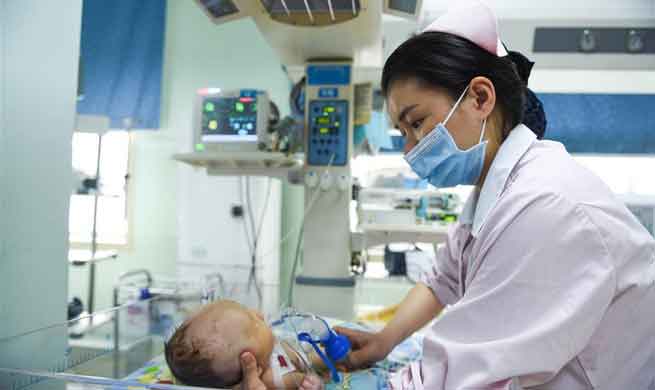SYDNEY, Feb. 20 (Xinhua) -- A simple new device that can turn a mobile phone into a research grade microscope could have the potential to revolutionize the way scientific research is done in some parts of world.
Capable of visualizing microscopic organisms 1/200th the size of a millimetre, the cutting edge clip-on' device would also be 3D printable, the Royal Melbourne Institute of Technology announced on Tuesday.
"This could have huge potential for research in impoverished or remote places because now you can do very simple diagnostics on site and you won't have to lug around a huge microscope with you," Research Fellow for RMIT's Centre for Nanoscale BioPhotonics, Dr. Antony Orth told Xinhua.
"Their use in these areas can be essential for determining water quality for drinking, through to analysing blood samples for parasites, or for disease diagnosis including malaria."
"Our mission was to put this technology into as many hands as possible, so we wanted to make it open source so that everyone has access to it."
Although many attempts to turn mobile phones into microscopes have been successful, other approaches require a substantial amount of hardware including external light and battery.
But the clip-on works by utilizing the flash of the camera already built into the phone now will make the device much easier to use.
"Light comes out of the flash and bounces down the walls of the illumination tunnels," Orth said.
"When the light hits the back of the clip it reflects off the plastic and turns around."
"Once light hits the sample, then light will continue on and go through the first lense, then it will go through the cover glass on the camera on your phone, and then into the camera lense that will focus the image onto the camera chip that's already built into your phone."
But while the design may hold vast possibilities for scientific researchers and university academics, Orth said the real potential of the portable device could lie with amatures and enthusiasts.
"We went down to a local pond to look at all the microorganisms that are in there, so it could be used for serious environmental research or just plain education," he said.
"For example, a glass of school children, or anybody, could go down to the pond and see all these cool micro-organisms."














